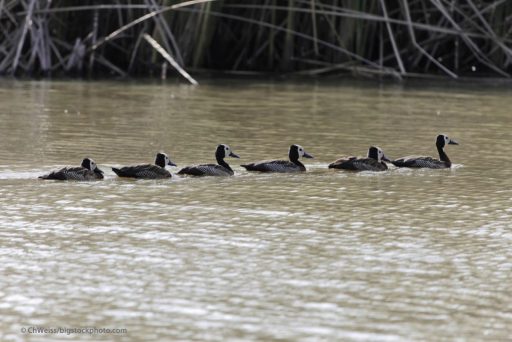
We live on the riverbank, and many geese, ducks, and swans swim by our house daily. I have always been curious about why waterfowl tend to swim in a line each time I see ducklings swimming in single-file behind their mother. Researchers at the University of Strathclyde in the U.K. have applied a mathematical and numerical model to find an explanation.
For example, the swimming of the mother duck sets up an interference pattern reducing the wave-drag and propelling the trailing duckling forward as it surfs the wave. In this way, the lead duckling swims in the “sweet spot” behind its mother. With the rest of the ducklings swimming in single-file, the “wave-riding” benefit carries further. After the third duckling in line, a “delicate dynamic equilibrium” is reached in which each duckling acts as a “wave passer,” passing on wave energy to the next one behind without loss of energy.
The lead author of the study is Zhiming Yuan, and he gave the researcher’s description of this design by saying, “It’s so beautiful.” He thinks that there could be applications for maritime technology with shipping firms designing their vessels so they can travel like ducks in a row to reduce fuel consumption.
It seems that evolutionary natural selection would have terminated this arrangement. An eagle wanting a duck or goose meal would have little trouble picking off ducklings swimming in single-file behind their mother. If the birds were moving in random arrangement around their mother, it should be far more difficult to focus on and pick off one of them. Survival of the fittest doesn’t seem to apply to the behavior of the birds that use a single file approach to travel.
We see that this design is built into the DNA of these birds to provide conservation of energy which is critical to their survival. When you look anywhere in the natural world, you will see extraordinary design to allow living things to exist and thrive.
— John N. Clayton © 2021
Reference: The Week, November 5, 2021 page 21. You can find the original scientific report HERE.
Discover more from DOES GOD EXIST? TODAY
Subscribe to get the latest posts sent to your email.
